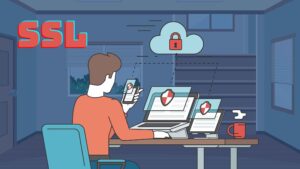

In today’s digital landscape, securing your website with an SSL certificate is paramount for safeguarding user data and establishing trust. While many hosting providers automate the SSL certificate acquisition process, understanding the underlying procedures and troubleshooting potential issues is essential for maintaining website security. This comprehensive guide delves into the intricacies of managing SSL certificates for your domain using Auto-SSL, the automated SSL certificate installation tool integrated with Server Gigabit’s cPanel control panel.
Prerequisites
Before embarking on this tutorial, ensure you have the following prerequisites:
-
A Server Gigabit cPanel account: This account provides access to your domain and the Auto-SSL tool.
-
SSH access to your Server Gigabit server: This enables direct command-line management of the server environment.
Understanding SSL Certificates and Their Significance
An SSL certificate is an essential cryptographic component that establishes a secure connection between your website and visitors’ browsers. It encrypts communication, protecting sensitive data such as passwords, login credentials, and financial information. Additionally, an SSL certificate adds a padlock icon and a green “https://” prefix to your website’s address in browsers, indicating to users that the website is secure and trustworthy.
Manually Running Auto-SSL for Immediate SSL Certificate Installation
The Auto-SSL tool within cPanel facilitates the effortless issuance and installation of SSL certificates for your domain. While it typically runs automatically every 12-24 hours, you can manually trigger the process to expedite SSL certificate acquisition.
Step-by-Step Guide to Manually Running Auto-SSL
-
Access cPanel: Login to your cPanel account using the provided credentials.
-
Navigate to SSL/TLS Status: Locate the “SSL/TLS Status” section within the cPanel interface.
-
Identify the Domain: Select the domain for which you want to install the SSL certificate. It could be your primary domain, a subdomain, or a specific IP address.
-
Enable Checkbox: Check the box next to the selected domain to mark it for SSL certificate installation.
-
Initiate Auto-SSL: Click the “Run AutoSSL” button to commence the manual SSL certificate installation process.
-
Monitor Progress: Observe the progress bar as Auto-SSL works to acquire and install the SSL certificate.
-
Verify SSL Installation: Once the installation is complete, access your website using HTTPS to confirm the SSL certificate is active. The green padlock icon and the “https://” prefix should be visible in the browser address bar.
Troubleshooting SSL Certificate Installation Issues
-
Investigate Errors: If Auto-SSL encounters an error during the process, carefully examine the error message provided to identify the underlying cause.
-
DNS Update: Ensure that the DNS records for your domain are properly configured and up-to-date. Newly created domains may require up to 24-48 hours for DNS propagation.
-
Mixed Content: After securing your website, check static HTML files to ensure they reference HTTPS instead of HTTP to avoid mixed content warnings.
Additional Tips for Enhancing SSL Security
-
Redirection Rule: Implement a redirection rule in .htaccess or through cPanel’s “Redirect” menu to automatically redirect all HTTP traffic to HTTPS. This ensures that visitors always access your website securely.
-
HTTPS Everywhere: Consider using browser extensions like HTTPS Everywhere to force HTTPS connections across all websites you visit, further enhancing security and privacy.
-
Regular SSL Certificate Renewal: Schedule regular renewals for your SSL certificates to maintain their validity and prevent security vulnerabilities.
Seeking Assistance from Server Gigabit’s Customer Support
If you encounter persistent issues with Auto-SSL or require further assistance, don’t hesitate to contact Server Gigabit’s customer support team. They are readily available to assist you and ensure your website remains secure and compliant with industry standards.
Conclusion
By carefully following this comprehensive guide, you can effectively manage SSL certificates for your domain using Auto-SSL and ensure your website operates securely and with enhanced trust among users. Remember to stay vigilant, regularly update your SSL certificates, and prioritize security measures to safeguard your website and user data.
